TRAX
The team behind TraX is motivated by what host Dave Johnson sees as a lack of English-language documentaries that cover “contemporary history, nature, or the more quirky things about Taiwan ... also, what is available isn’t particularly impressive in visual terms.”
Shot and edited by Colin Phoenix, TraX is produced under the banner of Guan Xi Media, a Taichung-based platform for artists of all kinds.
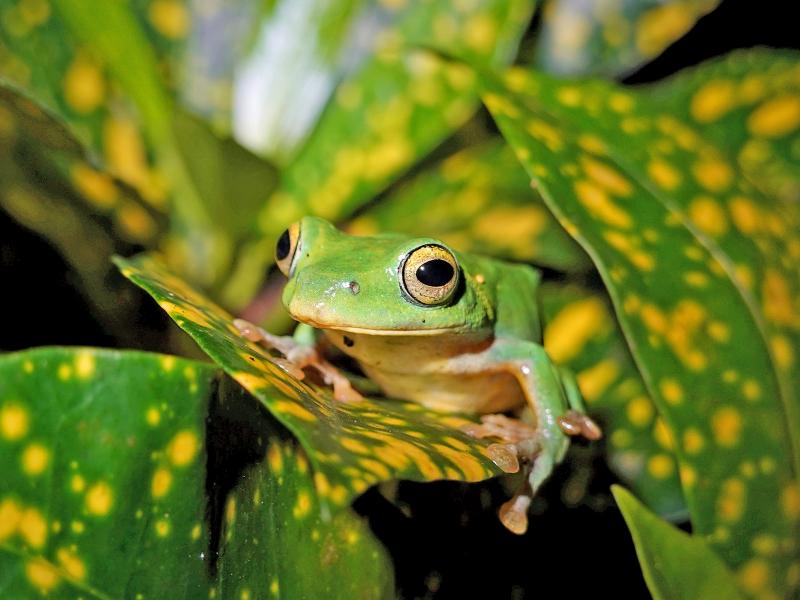
Photo courtesy of James Osborne
Guan Xi Media is led by Michael Schram, a Canadian resident of Taichung. “Michael occasionally accompanies us when we shoot a video, but the most important thing is that Guan Xi Media is a registered media company. That carries a bit of weight and opens doors. Through it, we’re now members of Association of Taiwan Journalists (台灣新聞記者協會),” Johnson says.
The company’s senior translator and coordinator Kelly Zheng (鄭安閑) also significantly contributes to the production process, Johnson says.
“Guan Xi Media was looking to start a video series, and they found me through the stories and photography I’d put online. I went for a meeting to see if our interests matched, and they did,” Johnson recalls.
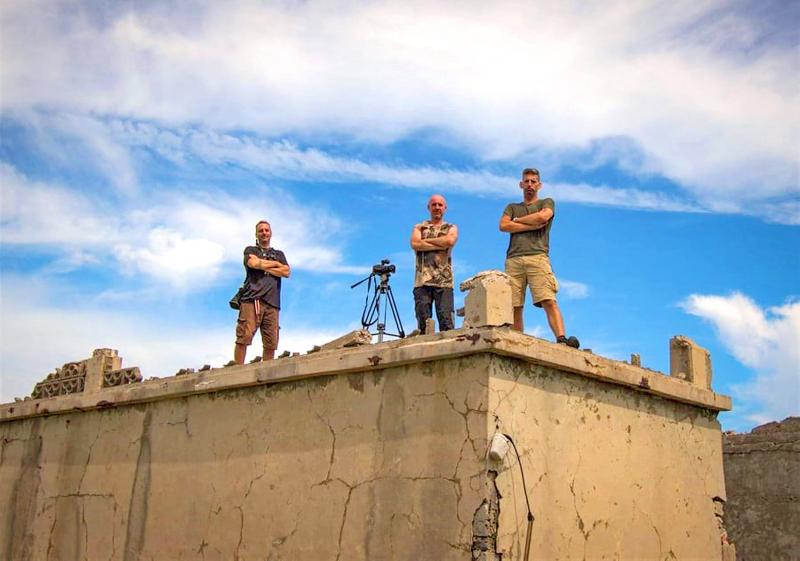
Photo courtesy of TraX
The series was named TraX to incorporate the X of Guan Xi and also to allude to “making tracks,” Johnson says. Guan Xi’s YouTube channel includes Urb-X, a series of urban exploration videos also made by Phoenix.
Before TraX got up and running, Phoenix had professional video and editing experience, “whereas I had absolutely no experience in front of the camera. I’m not a natural and I have to fight really hard to pull it off,” Johnson says.
“We felt that many of the videos showcasing Taiwan are vlogs, and they concentrate on things like food and night markets. We want to make mini-documentaries that will still be watchable and relevant 10 years from now,” says Johnson, an Englishman who’s lived in Taiwan for 12 out of the past 16 years.
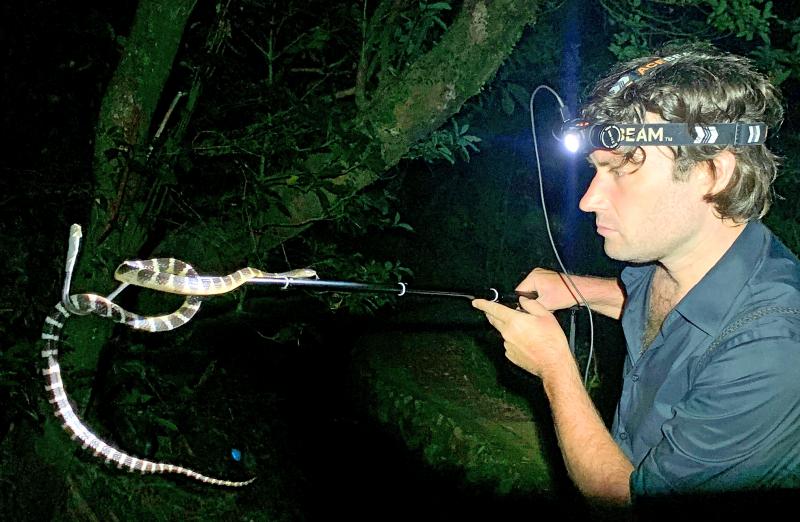
Photo courtesy of James Osborne
“We have a real love of nature, the outdoors, history, and being out there on the ground” he says.
Of the 10 videos TraX has so far put out, Johnson is most proud of “Taiwan’s Ghost Island” (about a now-uninhabited island in Penghu County) and “Chasing the Sugar Train” (featuring the last functioning section of Taiwan Sugar Corp railroad): “They’re the most visually impressive. But I’m proud of all of them, despite fairly low viewing figures. We have an impeccable like/dislike ratio, and an exceptional ‘like’ engagement of about 10 percent.”
“Taiwan’s Ghost Island” has been nominated for a prize in the Formosa Festival of International Filmmaker Awards’ best focumentary short film category.
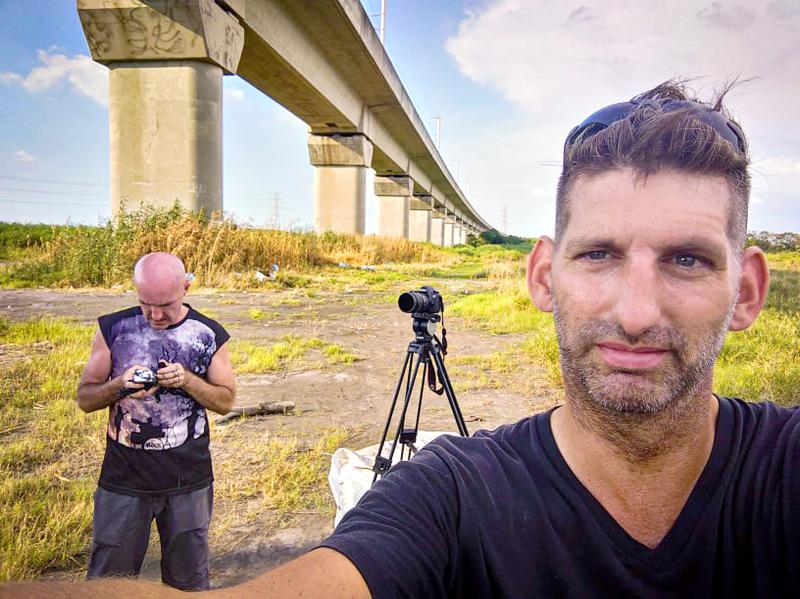
Photo courtesy of TraX
Unlike TraX’s other videos, which are based on research Johnson has done during the several years he’s been exploring the country, “Taiwan’s Ghost Island” benefited from input from local researchers.
The most difficult aspect of making videos, Johnson says, is dealing with weather and light issues.
“We’ve done two videos on railways, and we had to fit ourselves around their schedules to get the footage we need. If conditions aren’t ideal, we try our best to work around it,” he says.
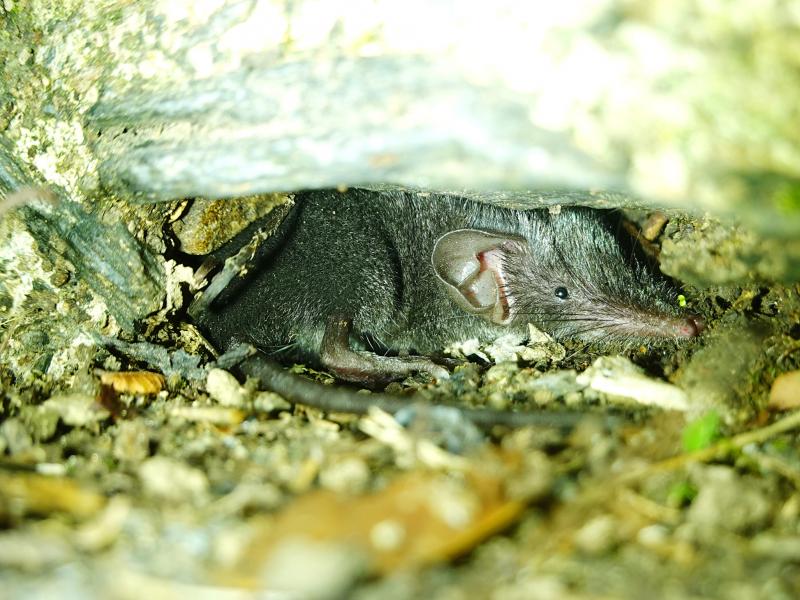
Photo courtesy of James Osborne
The TraX team has encountered a few legal issues. After releasing a video featuring a tunnel they’d explored, they were contacted by the Forestry Bureau.
“Before we filmed, we weren’t able to find out who owned the tunnel. The Forestry Bureau then told us it fell under their jurisdiction, and they asked for the video to be taken down. We argued that the video was of educational importance and in the public interest, and they’d not made a serious attempt to seal up the tunnel,” Johnson says. In the end, the video was allowed to stay online because the bureau dropped their complaint.
JAMES OSBORNE
“From before I can remember, I was always poking around ponds and looking under logs and rocks for frogs, lizards, and bugs,” says James Osborne, who uploads videos of after-dark wildlife to YouTube under his own name.
Now living in Taipei, where he teaches English, the New Zealander has been building up his knowledge of ecology and geography, and researching local reptiles, amphibians, and mammals.
“If you follow my channel, you may notice I’m more and more informed about species as time goes by,” he says.
For practical reasons, he’s not invested as much time in studying birdlife or insects: “Birds are too hard to shoot with my setup. The bugs here can be otherworldly, but it’s hard to find much information and the diversity is too vast.”
“When you go out to look for wildlife, you never know what you might encounter, so you can’t prepare much for a shoot,” he adds.
Osborne says that once he’s finished shooting, he needs between 10 and 30 hours to edit the footage and add English and Chinese subtitles.
“I’m a one-man operation, but I have friends who proofread and correct my subtitles. I enjoy the whole process and everything I learn along the way,” he says.
If he ever monetizes his channel, he adds, any income will first go to paying someone to do the subtitles.
Shooting wildlife is hardly easy, Osborne explains: “Animals are just doing their thing and seldom cooperate with the shoot. Sometimes I’m hanging off a tree with a camera in one hand and a light in the other. Other times the subject is too fast, too far away, or just won’t face the way you want it to. You go into nature, and you get what nature gives you.”
Inevitably, he has come across wonderful sights but hadn’t been able to get his camera out in time. He describes such experiences as “exciting but a bit gutting.”
Osborne has noticed that how he feels about a finished video is no guide to how many views it’ll get. He was quite satisfied with “Dung Beetle Rolling Poop” — but it failed to set the Internet alight. A couple of others which he threw together in a rush have done much better.
In terms of views, “Finding Glowing Scorpions with UV Light,” which he shot on Kaohsiung’s Cijin Island (旗津), is the most successful of the 31 videos he’s uploaded to YouTube, probably because it received some media attention.
Osborne accepts that his channel is unlikely to ever make much money. “But it’s opened some doors and allowed me to meet like-minded people,” he says. “I’ve been approached by a company to sell them footage for a film about Yangmingshan (陽明山). I’ve made friends and contacts with others in Taiwan who adore or research wildlife. That in itself is worth more than gold.”
Steven Crook has been writing about travel, culture and business in Taiwan since 1996. He is the author of Taiwan: The Bradt Travel Guide and co-author of A Culinary History of Taipei: Beyond Pork and Ponlai.

Nov. 11 to Nov. 17 People may call Taipei a “living hell for pedestrians,” but back in the 1960s and 1970s, citizens were even discouraged from crossing major roads on foot. And there weren’t crosswalks or pedestrian signals at busy intersections. A 1978 editorial in the China Times (中國時報) reflected the government’s car-centric attitude: “Pedestrians too often risk their lives to compete with vehicles over road use instead of using an overpass. If they get hit by a car, who can they blame?” Taipei’s car traffic was growing exponentially during the 1960s, and along with it the frequency of accidents. The policy

What first caught my eye when I entered the 921 Earthquake Museum was a yellow band running at an angle across the floor toward a pile of exposed soil. This marks the line where, in the early morning hours of Sept. 21, 1999, a massive magnitude 7.3 earthquake raised the earth over two meters along one side of the Chelungpu Fault (車籠埔斷層). The museum’s first gallery, named after this fault, takes visitors on a journey along its length, from the spot right in front of them, where the uplift is visible in the exposed soil, all the way to the farthest

While Americans face the upcoming second Donald Trump presidency with bright optimism/existential dread in Taiwan there are also varying opinions on what the impact will be here. Regardless of what one thinks of Trump personally and his first administration, US-Taiwan relations blossomed. Relative to the previous Obama administration, arms sales rocketed from US$14 billion during Obama’s eight years to US$18 billion in four years under Trump. High-profile visits by administration officials, bipartisan Congressional delegations, more and higher-level government-to-government direct contacts were all increased under Trump, setting the stage and example for the Biden administration to follow. However, Trump administration secretary

The room glows vibrant pink, the floor flooded with hundreds of tiny pink marbles. As I approach the two chairs and a plush baroque sofa of matching fuchsia, what at first appears to be a scene of domestic bliss reveals itself to be anything but as gnarled metal nails and sharp spikes protrude from the cushions. An eerie cutout of a woman recoils into the armrest. This mixed-media installation captures generations of female anguish in Yun Suknam’s native South Korea, reflecting her observations and lived experience of the subjugated and serviceable housewife. The marbles are the mother’s sweat and tears,